- Free Shipping and 100 days free returns.
The Viking Age, spanning the late 8th to early 11th century, was characterized by the Norse people’s strength at sea, their discovery of new territories, and frequently, their bloody battles. A complex network of symbols, each with deep symbolic meanings and narratives, was fundamental to their civilization. Among these, the Viking axe is particularly noteworthy since it is a weapon as well as a highly symbolic relic that captures the ideals, principles, and artistic sensibilities of Norse culture. To put light on the meanings and cultural relevance of eight potent symbols connected to the Viking axe, this blog post will tell all about them in detail. So stick to the end
One of the most well-known Viking axes is perhaps the Mammen Axe, which is renowned for its exquisite craftsmanship and elaborate design. This axe, which was found in a burial mound in Mammen, Denmark, was made in the late tenth century.
The Mammen Axe is ornately engraved with geometric designs, animals, and flora as motifs. Not only are these ornaments decorative, but they also represent the great regard the Vikings had for artistry and craftsmanship. The intricate patterns convey the Norse people’s sense of cultural pride and admiration for artistry and talent. The Mammen Axe is a metaphor for the meeting point of art and military, emphasizing that even weapons of war may be made with attention to artistic detail and care.
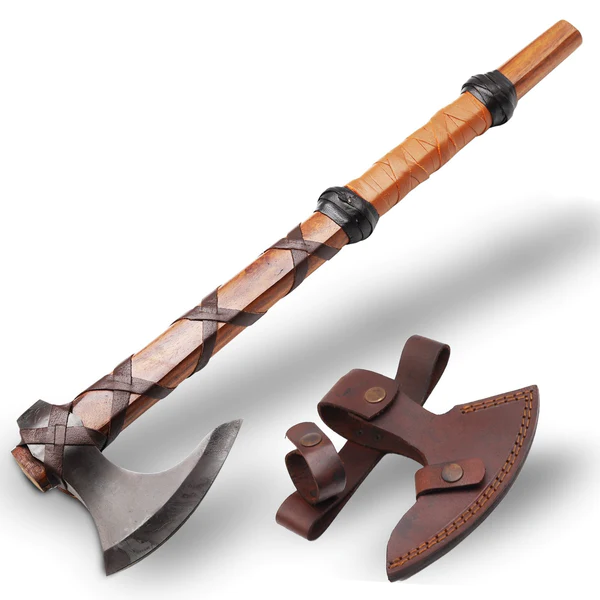
The extended lower blade of the Bearded Axe, also known as the Skeggøx, resembles a beard. This design has symbolic meaning in addition to being useful, providing a stronger grip and more flexible use.
Viking warriors historically favored the bearded axe as a tool and weapon. Its design made it possible to use it for both practical tasks like woodcutting and combat efficiency. Because of its adaptability, it was an essential component of Viking life. The Bearded Axe is a symbol of inventiveness and adaptation, two traits that the Vikings frequently found themselves in and which were essential for their success and survival. It also embodies the Viking mindset of utilizing resources to the fullest and skillfully adjusting to changing circumstances.
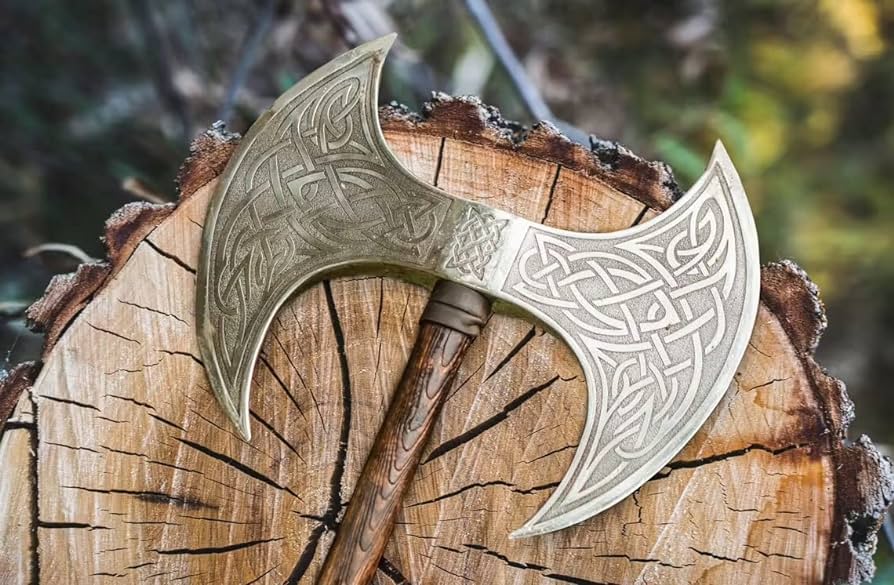
In many civilizations, the double-headed axe is a powerful symbol; among the Vikings, it had special significance. With two blades on either side of the axe head, this design offers a well-balanced weapon for combat.
The god Thor is frequently connected to the double-headed axe in Norse mythology, as the deity possessed a weapon called Mjölnir that was equally potent. The two blades draw attention to the Viking weaponry and their awareness of duality in life, symbolizing the harmony between creation and destruction. In Norse astronomy, where the cosmos was fashioned by the interaction of opposing forces, this equilibrium was crucial. The double-headed axe is a symbol for harmony and the need for balance in both daily life and combat.It serves as a reminder that strength lies not just in brute force but in maintaining equilibrium.
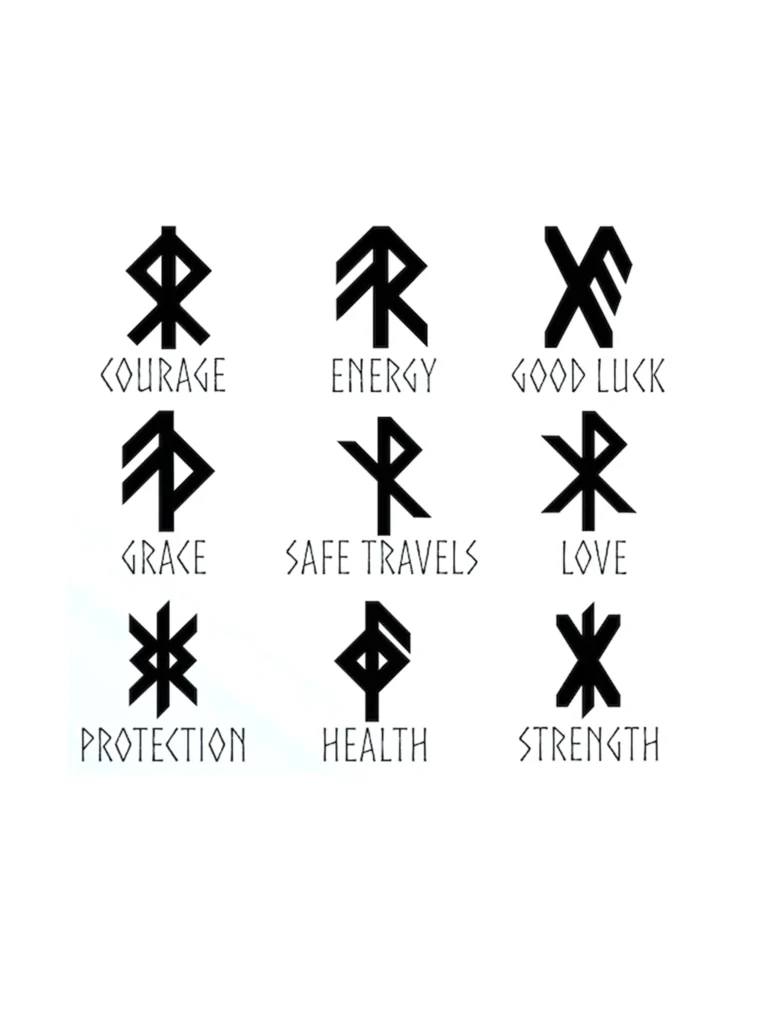
For the Vikings, runes were more than just a writing system; they were thought to possess magical abilities and were frequently engraved on a variety of items, such as axes.
Viking axes were often engraved with common runes, including the Algiz (ᛉ) for protection, the Tiwaz (ᛏ) for triumph, and the Uruz (ᚢ) for strength. These runes functioned as talismans, offering their possessor mystical and spiritual support in both daily life and combat. Runic inscription on axes is a custom that denotes a close relationship between the material and spiritual worlds. It emphasizes the notion that these symbols might call forth divine protection, favor, and strength, converting the axe from a tool into a magical energy channel.
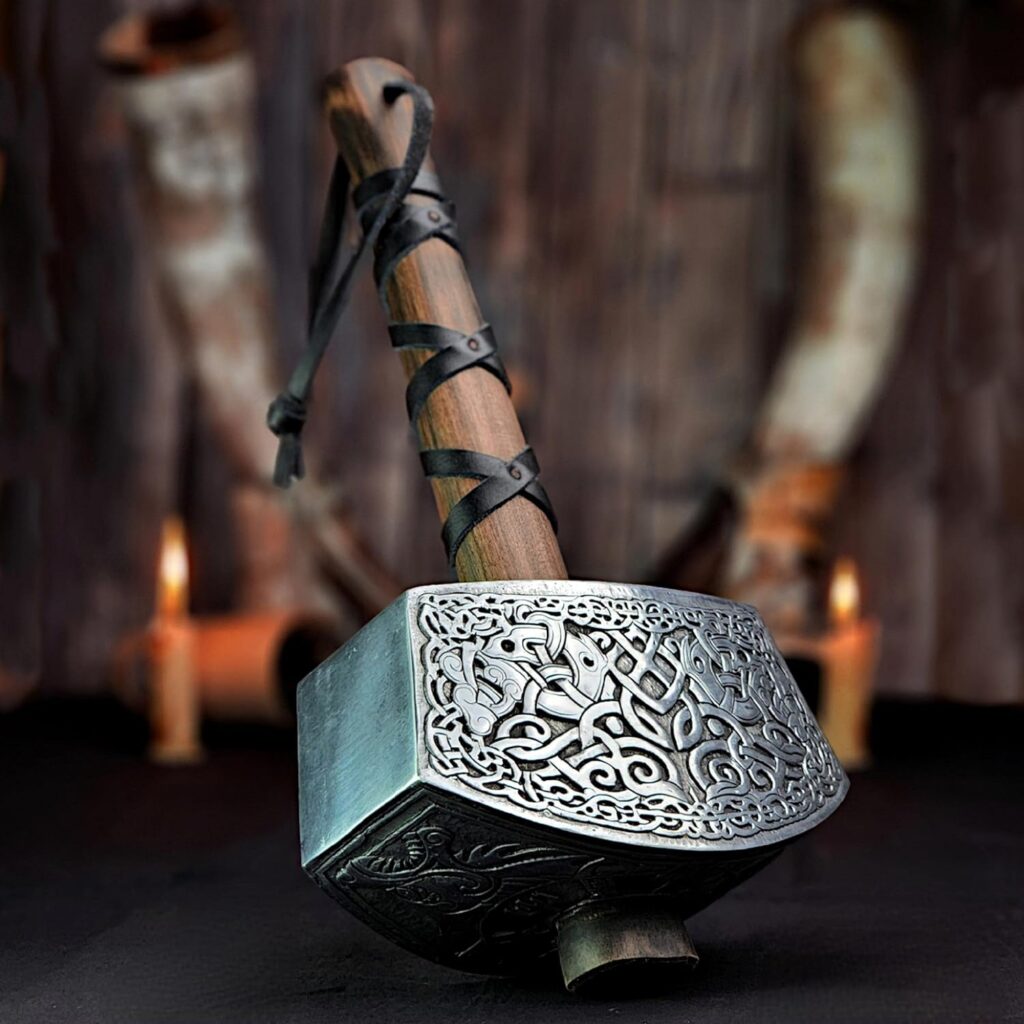
One of the most recognizable images in Norse mythology is Thor’s Hammer, or Mjölnir, which symbolizes the powerful hammer that the thunder god Thor wields. On Viking axes, this sign was occasionally painted, giving them Thor’s characteristics.
Mjölnir has historically represented protection, good fortune, and heavenly power. The Vikings thought that wearing Thor’s hammer could protect them from evil and give them strength. Engraved on axes, Mjölnir was a powerful symbol of divine protection and favor. It represented the gods’ defending force as well as the bravery and strength required in combat. Thus, this emblem on a Viking axe signified both the certainty of being under Thor’s protection spiritually and physically.
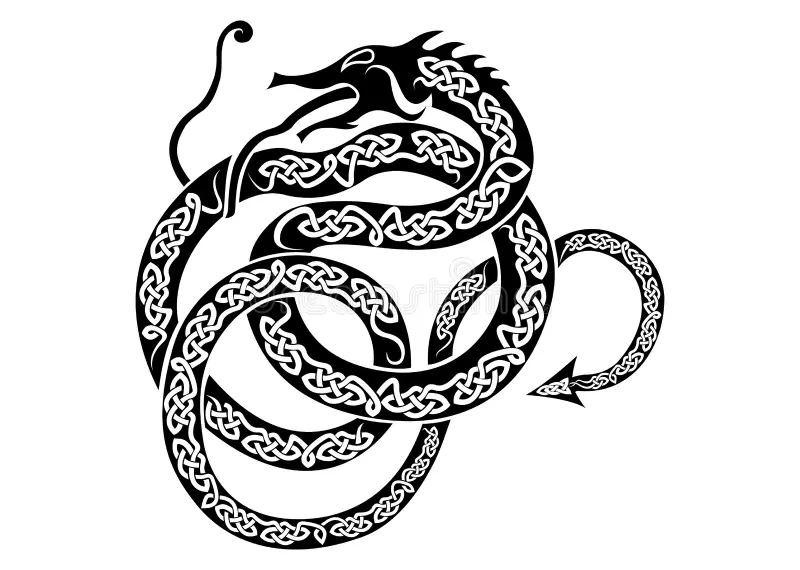
Dragons and serpents are recurring motifs in Norse mythology and Viking art, often symbolizing power, mystery, and protection. These creatures were believed to possess great wisdom and were often depicted on weapons and other artifacts.
On Viking axes, dragon or serpent designs conveyed the qualities of these mythical beings. Dragons were seen as guardians and protectors, fierce in battle yet wise and cunning. The presence of such motifs on axes symbolized the wielder’s aspiration to embody these traits. It also suggested a connection to ancient, mystical forces, granting the warrior both physical prowess and spiritual insight. The dragon or serpent motif thus enhanced the symbolic power of the axe, making it a representation of both protection and formidable strength.
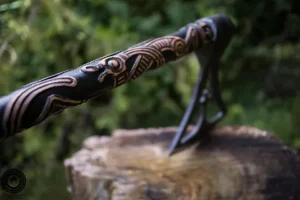
The Viking axe has a rich cultural and symbolic meaning and is much more than just a tool. The Mammen Axe, Bearded Axe, Double-Headed Axe, Runes, Thor’s Hammer, dragon or snake motifs, animal totems, and Valknut are among the eight symbols that are examined in this post. Each symbol has a distinct significance that provides an understanding of the Norse ideals and worldview. Gaining a greater understanding of these symbols allows us to appreciate Viking items even more and feel more connected to the Norse legacy.